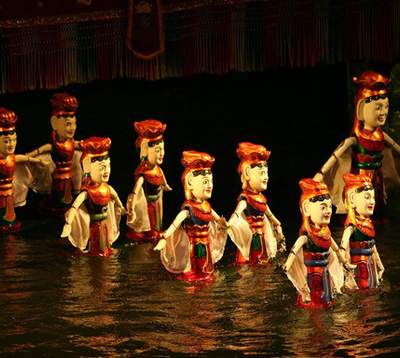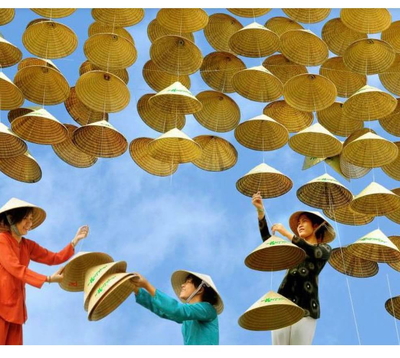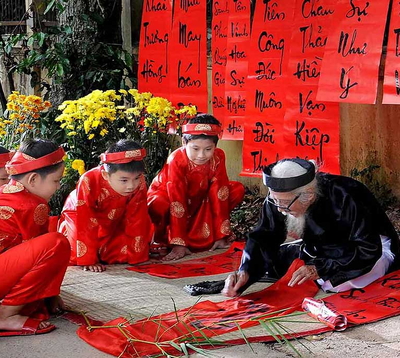All About Ao Dai - Traditional Dress Of Vietnam

When traveling across Vietnam, you will see ladies everywhere wearing ao dai. A long shirt is what 'Ao dai' signifies in Vietnamese. The Vietnamese national costume is a symbol of beauty and grace.
The traditional female ao dai is a long, tight-fitting silk garment with long sleeves worn over long slacks. It provides the user with a basic but attractive silhouette while yet revealing the body's contours.
In this blog, Asianwaytravel will explain the history of Ao Dai and how to choose and wear Ao Dai Vietnam
The History of Ao Dai Vietnam
Ao Dai for Women
Ao Giao Lanh (about the 17th century) is considered the first known version of Ao Dai Vietnam. This was a four-piece garment with a long black skirt and a fabric belt to cinch the waist.

Ao Tu Than
Vietnamese people transformed "Ao Giao Lanh" into a four-piece dress with two front flaps that may be knotted for convenience for farming and trading. Ao Tu Than was combined with a long skirt, a "Yem" (an antique undergarment), and a silk belt. Ao Tu Than was fashioned of black fabric so it wouldn't get filthy.
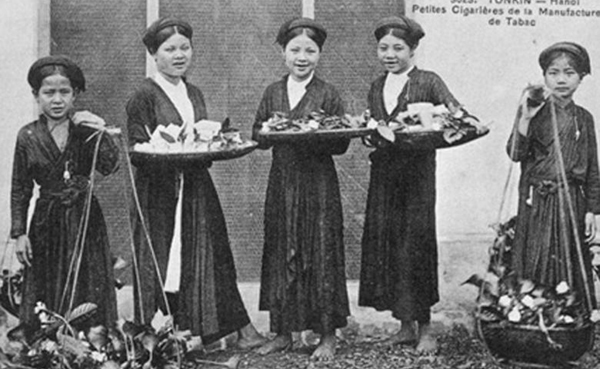
Urban Vietnamese ladies wore Ao Ngu Than to separate themselves from the lower class. Ao Ngu Than resembled Ao Tu Than, but the front and rear flaps were sewed together and the fifth flap was covered. This design made Ao Ngu Than chicer. The affluent wore this kind of Ao Dai into the 20th century.
Ao Dai Lemur
Cat Tuong Artist redesigned Ao Dai from Ao Tu Than to become a popular genre in 1939. In the past, Ao Tu Than resembled a typical loose and baggy garment. However, Cat Tuong Artist changed it to embrace the body's curves and incorporated western features like puff sleeves, a heart-shaped collar, and ribbons.
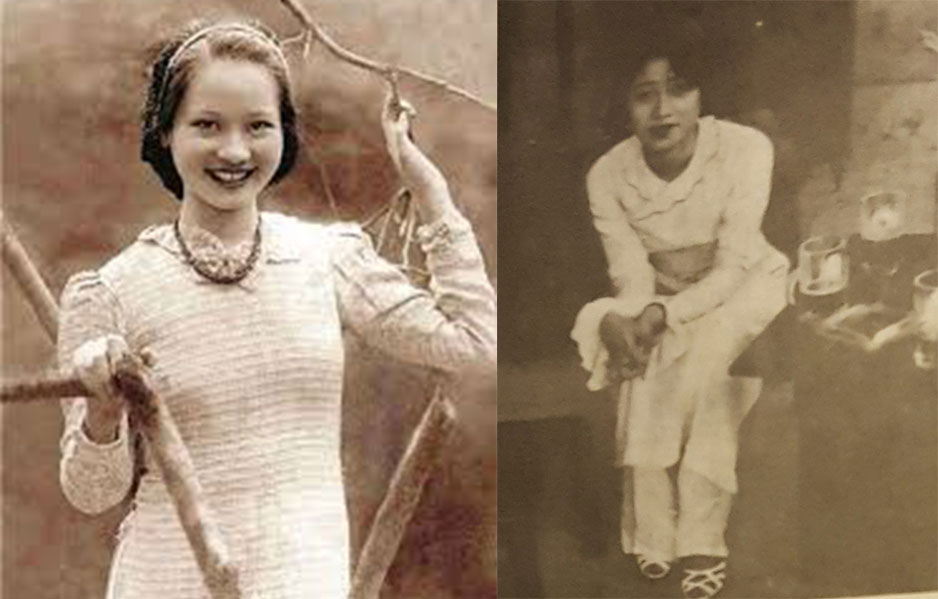
In addition, this new Ao Dai style was paired with white pants, a handbag, an umbrella, and high heels. It was titled Ao Dai Lemur due to the French name of its creator, Cat Tuong Artist, which is Lemur. However, Ao Dai Lemur is seen as obscene and contrary to traditional norms, hence only a few contemporary ladies ventured to wear it. Ao Dai Lemur was gradually forgotten.
Ao Dai Mrs. Nhu
Mrs. Nhu (also known as Mrs. Tran Le Xuan), the wife of Ngo Dinh Nhu - Chief Political Advisor to Ngo Dinh Diem, President of South Vietnam's First Republic, developed a new version of Ao Dai in 1958. It was a dress with an open neck embellished with exquisite fabric motifs. Mrs. Nhu's Ao Dai was immensely popular due to the fact that it was more appealing and well suited to the humid climate of southern Vietnam. However, it was heavily condemned since it contradicted the traditions and practices of the Vietnamese at the time.
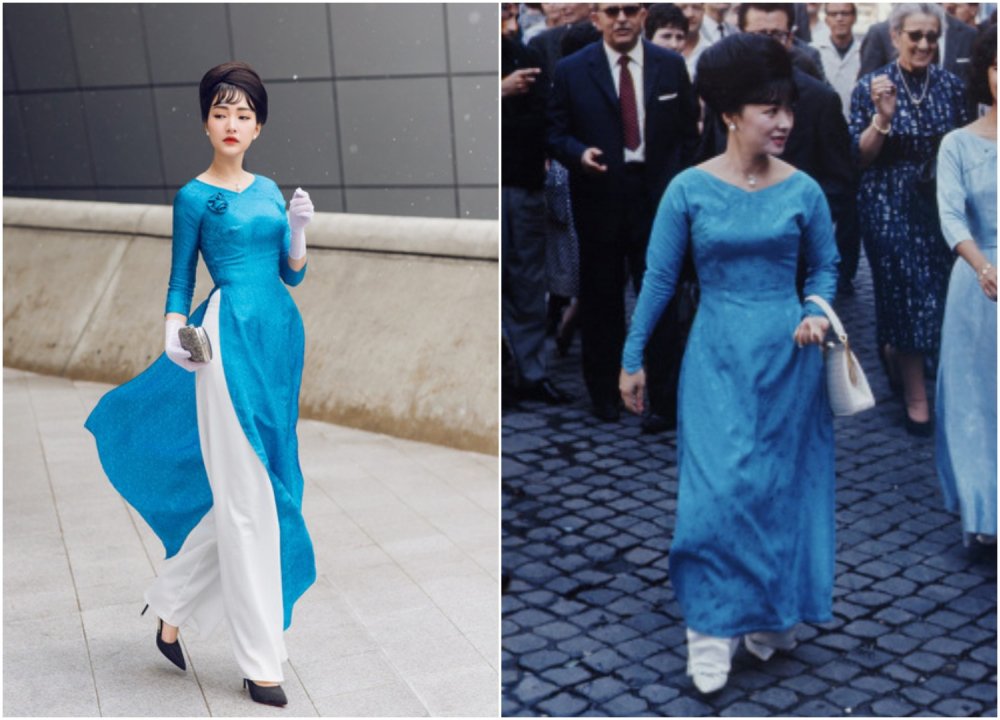
Tight Waisted Ao Dai
During the 1960 – 1970 period, Ao Dai grew in popularity. As a result, the Tight Waisted Ao Dai was immensely popular among urban ladies with an open mind since it could accentuate their body contours. In addition, for practicality and ease, a shorter version of the Tight Wasted Ao Dai was produced with knee-length panels. This little variant was mostly used by female pupils.
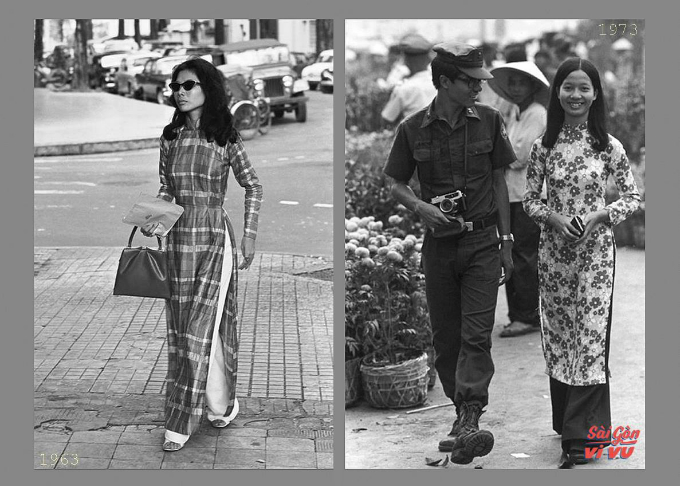
Modern Ao Dai
The expansion of the fashion industry and the effects of globalization have had the effect of making contemporary Ao Dai Vietnam more trendy and more popular. Despite these changes, Ao Dai Vietnam has managed to keep its traditional beauty and its original shape.
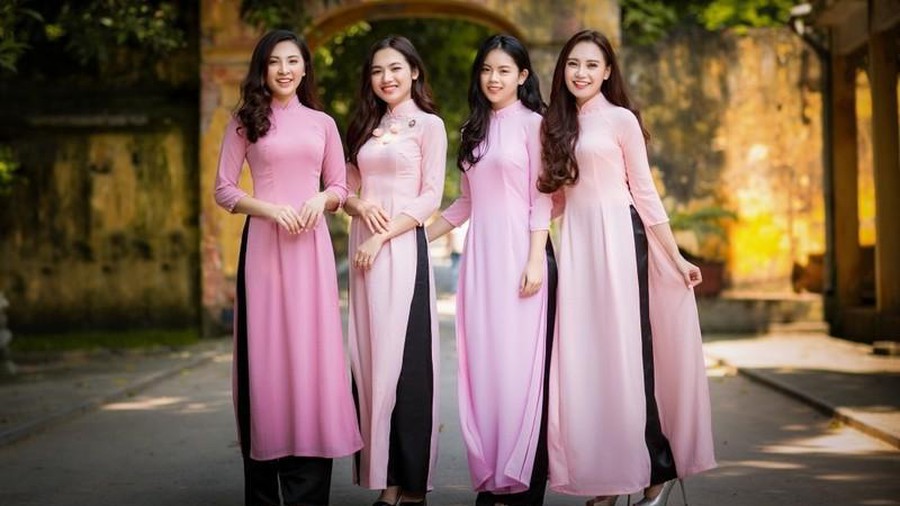
The modern Ao Dai may be fashioned from a wide variety of fabrics and can be worn in combination with jeans or loose silk trousers. Today, the Ao Dai Vietnam is reserved for use for important days, such as weddings, traditional festivals, and other important events.
Ao Dai for Men
Ao Dai was the traditional everyday attire for Vietnamese men in the past. It featured a more straightforward style, with a two-piece dress and loose pants. From the 18th to the 19th century, when western clothing was brought into Vietnam, it progressively supplanted the Ao Dai and became the most popular costume for males in Vietnam due to its practicality and masculinity.

The design of Ao Dai for men has not changed much throughout time. Today, it is only worn at traditional events like the Tet festival by the elder generation of Vietnamese males.
When to Wear Ao Dai
Wearing Ao Dai Vietnam on a special day
In Tet holiday
Tet is the most significant and largest holiday of the year in Vietnam. Consequently, despite the ease of Western-style clothing for everyday duties, Vietnamese people think that wearing Ao Dai Vietnam may create the formal mood of a celebration, demonstrate respect for senior family members, and preserve Vietnamese heritage. These are the reasons why it is common to see individuals wearing Ao Dai during the Tet festival.
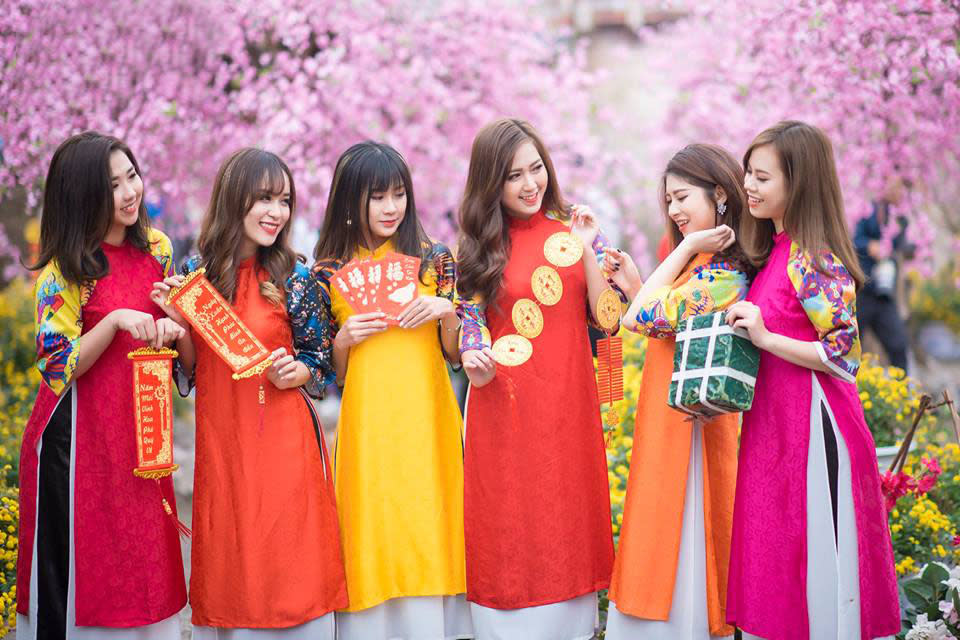
Today, numerous types of stylish and trendy Ao Dai Vietnam have arisen in response to the different needs of the Vietnamese people and the active activities of the Tet celebration. The length of the front and back layers of the Ao Dai worn during the Tet holiday is shortened and it is stitched from cool and soft fabrics like silk, linen, etc. Red, yellow, and bright colors are the most popular choices for Ao Dai during Tet since they are thought to bring good fortune and a prosperous start to the new year.
All family members, including men and children, wear Ao Dai during Tet to participate in the New Year's celebration, take family photographs, and visit pagodas to pray for a prosperous year. In certain tiny communities in the north of Vietnam, the locals celebrate the Lunar New Year by donning the old forms of Ao Dai - Ao Tu Than.
At wedding and engagement parties
Vietnam's old custom was for weddings and engagement celebrations to be held in Ao Dai. However, as a result of globalization, the western wedding dress has long since overtaken the traditional Ao Dai in Vietnam due to its innovative and contemporary beauty.
Today, as a result of the growth of the fashion industry and the ingenuity of Ao Dai designers, Ao Dai Vietnam for both brides and grooms is becoming more stylish and appealing. As a consequence, many couples blend Ao Dai and Western attire for their weddings, with Ao Dai worn for the traditional ceremony and Western attire worn for the reception.

In addition to the bride and groom, the parents of the pair, close relatives, bridesmaids, and groomsmen also wear Ao Dai throughout the wedding ceremony. Ao Dai for the bride and groom is often crimson to symbolize happiness and good fortune.
Ao Dai for bridesmaids and groomsmen are also bright colors like as yellow, blue, pink, etc., in order to create a stimulating wedding environment. As in Western nations, the cost of a wedding Ao Dai is rather high, therefore couples often hire one for their wedding and engagement parties.
Wearing Ao Dai Vietnam in School
In Vietnam, female high school students are required to wear Ao Dai to preserve the Vietnamese culture. Monday's dress code for the majority of high schools in Vietnam requires female students to wear Ao Dai.
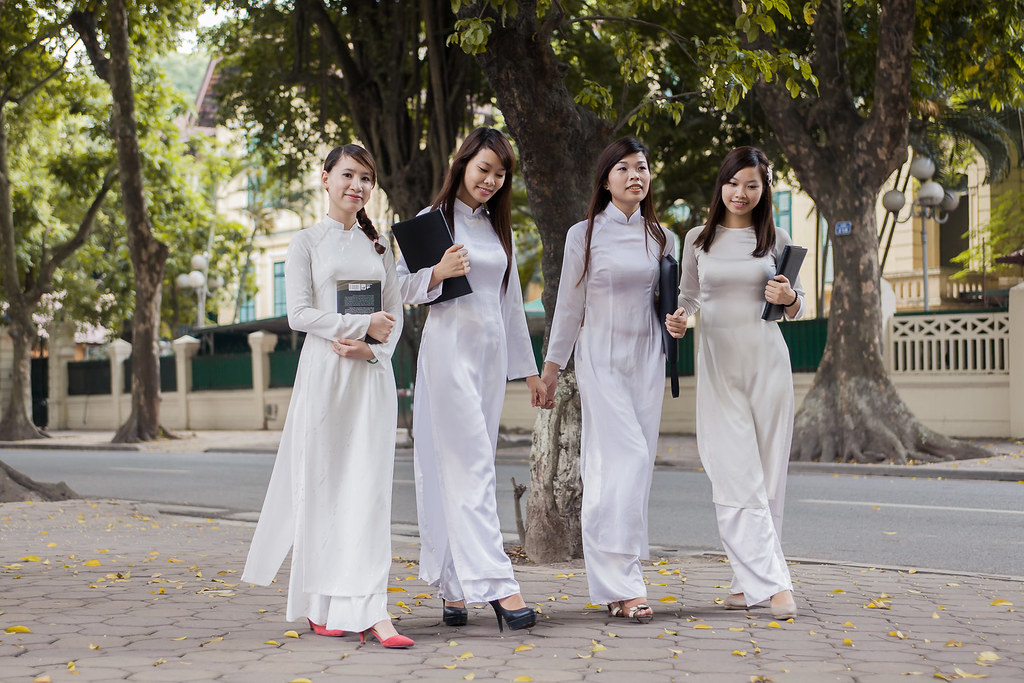
On Mondays, you will observe a large number of female students wearing Ao Dai, which creates a pure and graceful attractiveness for female students. Students in Vietnam often wear a white Ao Dai with silk pants to feel comfortable and cool at school.
Ao Dai in Vietnamese Art
Ao Dai in Vietnamese Poetries
Many artists have depicted Vietnamese women and girls wearing Ao Dai, most notably in poetry and song. The renowned poem about ao dai is "Ha Dong silk Ao Dai" by Nguyen Sa Poet, which has been popularized as a song and inspired a film with the same name.
Ao Dai in Vietnamese movies
The sole thing drawing people to the movie "Miss Sai Gon" was its straightforward plot, which focused on the Thanh Nu tailor shop in Saigon at the time. The story's seeming simplicity conceals the ups and downs of the lengthy dress with national spirit. The "contemporary" attire of "Miss Sai Gon," from color to style, surprises and intrigues the audience.
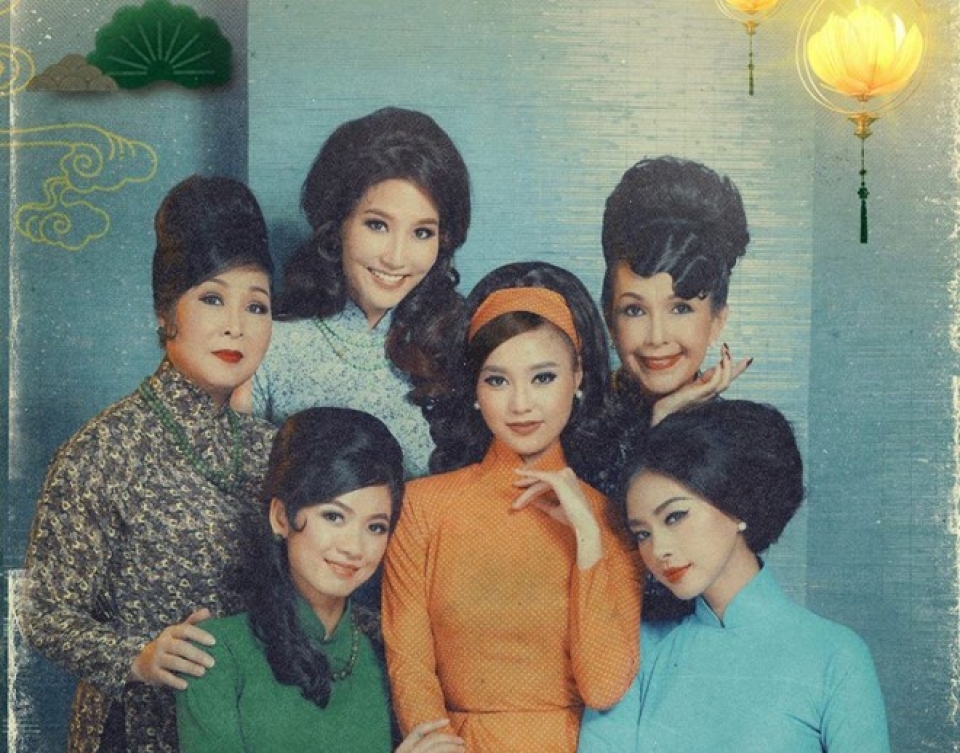
Memories of Vietnamese fashion via the long-running family drama "Miss Sai Gon" are so distinctive that we often associate Saigon with a long dress with a floral pattern accent, along with long black slacks with a matte finish, gently glazed hair, or long black hair.
Ao Dai in International & Vietnamese Fashion Shows
A great number of ao dai performances and designs have taken place not only in Vietnam but also in other countries. One of the individuals who has achieved a great deal of success while presenting and marketing the collection of ao dai is the designer Minh Hanh. Minh Hanh has held the highest place in many instances of the Vietnamese Fashion Week or other major festivals.
Tips When Buying Ao Dai
For slender and skinny body
Collar: Choose an Ao Dai with a collar that is at least 3 inches (7.5 centimeters) high, but no more than 4.5 centimeters (1.75 inches). A high collar will help conceal the neck bone and make you feel more confident and active.
Form: You should pick the appropriate one and avoid choosing the incorrect one.
Material: Thin individuals should choose a soft, lightweight fabric that is slightly stretchy and not too thin when selecting an Ao Dai. The most appropriate fabric for you is silky-soft cloth, artificial silk, brocade, satin, or velvet. Particularly, you should select the garment whose creator sewed two layers to make your figure fuller.
Color: You should select a neutral hue, such as pale yellow or mint green, which will illuminate the skin and make you appear fuller. If your complexion is light and white, you should wear red, dark pink, yellow, orange, etc., which will make your body appear fuller.
For chubby body
Collar: You should not select an Ao Dai with a round neck, as this would disclose short neck faults; instead, choose a shirt with a round, V, or attractive boat neck.
Color: You should wear an Ao Dai with a boat neck, dark purple, or dark red, depending on your physique. Ao Dai with a neutral hue and a somewhat cold-leaning undertone can assist persons with a slimmer physique to seem better.
Material: Individuals with a round physique should pick a soft, flexible, yet thick material that may conceal flaws. Specifically, you should avoid garments with a high sheen, such as satin and silk.
For fit body
This body may pair with any desired style, pattern, or texture. To create the most beautiful Ao Dai, you should not sew with chiffon material because it is too thin, so diminishing the texture's beauty. In addition to picking the design, material, and cosmetics, the style of the wearer will produce true beauty for Vietnamese women via every gesture, walk, and language of soft communication.
Tips to Get a Perfect Appearance with Ao Dai
How to choose suitable underwear
To accentuate the beauty of the background and the innate delicacy of the Ao Dai, the interior should not be overly conspicuous so as not to offend traditional sensibilities. You should select a hue that is nude or the same color as your shirt for the most discretion.
Choose bra underwear or a detachable strap for self-assured women with seductive shoulders and a long lace dress who are also wearing a bra. The breasts that support the breasts, the slightly pointed at the head, and the close distance between the two breasts will create a neater and rounder upper body.
How to mix Ao Dai with accessories
With long dresses, classic girlfriends may choose to wear scarves and neckties. However, this pairing is often reserved for formal weddings and picture sessions. You may select from a range of pearl necklaces, including earrings, necklaces, rings, rings, and so on. It will be your highlight and be aesthetically appealing. You should select little accessories, such as handbags and purses, in the same color tone as a long dress or in basic black and white.
Final Thoughts
Each nation and ethnic group has its own culture, regional traits, and traditional attire. Japanese ladies are proud of their Kimono, Korean women are renowned for their Hanbok, and Indian women's Sari has left a lasting effect... From ancient times to the present, Vietnamese women have always displayed their beauty via their traditional attire and allure.
Life is continuously expanding and altering. It will continue to be the emblem of the Vietnamese lady in the future, despite the fact that demand and fashion styles are changing in accordance with the periods and people. The sight of a beautiful Vietnamese woman wearing an ao dai will leave a lasting impact on both local and international tourists since it represents the traditional culture of Vietnamese women.
Reviews











